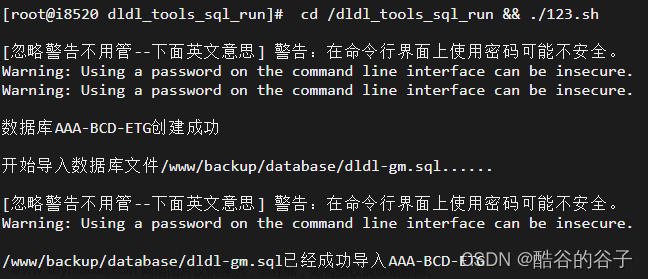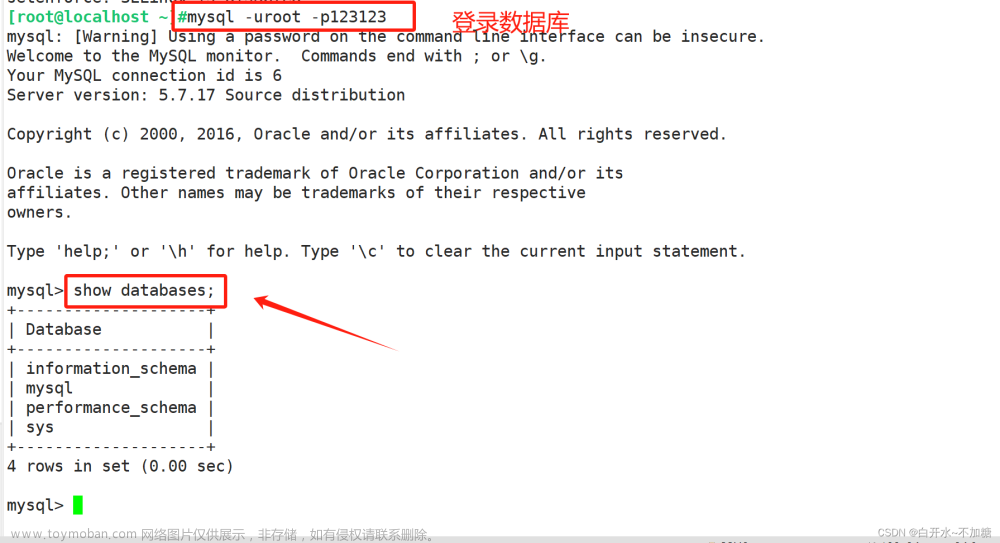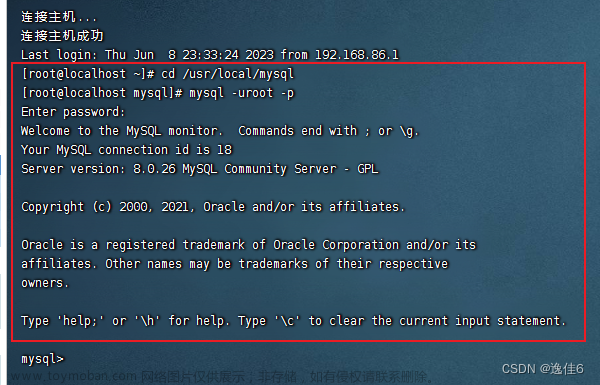一、功能介绍
cpu idleu作用:在cpu空闲状态下进入低功耗模式,从而达到节省功耗的目的。
idle低功耗模式主要的省电策略:1)wfi 2)关闭cpu时钟 3)关闭设备等
实现原理:linux内核初始化时,会为每个cpu创建一个idle线程,当该cpu处于空闲状态,即cpu上没有可调度的线程或可执行的task,此时调度器会选择idle线程执行,进入idle低功耗状态。而idle状态又分为不同的层级,越深的层及省电越优,但系统恢复越慢,因此需要结合用户需求,选择进入哪个层级的idle状态。
二、功能框架

1)scheduler:cpu调度器,当cpu处于空闲状态(没有可执行的task),选择idle task执行,进入cpuidle模式。
2)cpuidle core:cpuidle core抽象出cpuidle device、cpuidle driver、cpuidle governor三个实体。向cpu sched模块提供接口,向user space提供用户节点、向cpuidle drivers模块,提供统一的driver注册和管理接口、向cpuidle governors模块,提供统一的governor注册和管理接口。
3)cpuidle governors:提供多种idle的策略,比如menu/ladder/teo/haltpoll。
4)cpuidle drivers:负责idle机制的实现,即:如何进入idle状态,什么条件下会退出。
(后续讲解以menu governor为例)
三、cpu idle工作流程
3.1 cpuidle初始化流程

3.2 cpuidle触发流程

四、idle state选择
4.1 idle state选择 ---menu_select
决定选择进入哪个idle层级由系统容忍度延迟latency_req和预期idle的predicted_us时长决定。
/**
* menu_select - selects the next idle state to enter
* @drv: cpuidle driver containing state data
* @dev: the CPU
* @stop_tick: indication on whether or not to stop the tick
*/
static int menu_select(struct cpuidle_driver *drv, struct cpuidle_device *dev,
bool *stop_tick)
{
struct menu_device *data = this_cpu_ptr(&menu_devices);
// 1.获取系统容忍延迟
s64 latency_req = cpuidle_governor_latency_req(dev->cpu);
unsigned int predicted_us;
u64 predicted_ns;
u64 interactivity_req;
unsigned long nr_iowaiters;
ktime_t delta_next;
int i, idx;
// 2.更新上一次进入idle状态信息为本次进入idle状态的信息
if (data->needs_update) {
menu_update(drv, dev);
data->needs_update = 0;
}
// 3.获取下一次tick的到来时间
/* determine the expected residency time, round up */
data->next_timer_ns = tick_nohz_get_sleep_length(&delta_next);
// 4. 获取该cpu上IO wait等待线程(sleep状态)的数量
nr_iowaiters = nr_iowait_cpu(dev->cpu);
// 5. 根据next_timer_ns和nr_iowaiters获取校正因子
data->bucket = which_bucket(data->next_timer_ns, nr_iowaiters);
if (unlikely(drv->state_count <= 1 || latency_req == 0) ||
((data->next_timer_ns < drv->states[1].target_residency_ns ||
latency_req < drv->states[1].exit_latency_ns) &&
!dev->states_usage[0].disable)) {
/*
* In this case state[0] will be used no matter what, so return
* it right away and keep the tick running if state[0] is a
* polling one.
*/
*stop_tick = !(drv->states[0].flags & CPUIDLE_FLAG_POLLING);
return 0;
}
// 6.基于校正因子、next_timer_ns、NSEC_PER_USEC获取一个idle预期时长
/* Round up the result for half microseconds. */
predicted_us = div_u64(data->next_timer_ns *
data->correction_factor[data->bucket] +
(RESOLUTION * DECAY * NSEC_PER_USEC) / 2,
RESOLUTION * DECAY * NSEC_PER_USEC);
// 7.计算最小的idle预期时长
/* Use the lowest expected idle interval to pick the idle state. */
predicted_ns = (u64)min(predicted_us,
get_typical_interval(data, predicted_us)) *
NSEC_PER_USEC;
if (tick_nohz_tick_stopped()) {
/*
* If the tick is already stopped, the cost of possible short
* idle duration misprediction is much higher, because the CPU
* may be stuck in a shallow idle state for a long time as a
* result of it. In that case say we might mispredict and use
* the known time till the closest timer event for the idle
* state selection.
*/
if (predicted_ns < TICK_NSEC)
predicted_ns = delta_next;
} else {
/*
* Use the performance multiplier and the user-configurable
* latency_req to determine the maximum exit latency.
*/
// 8.计算系统iowaiter容忍度
interactivity_req = div64_u64(predicted_ns,
performance_multiplier(nr_iowaiters));
// 9.最后取前面两个系统容忍度中最小值,作为最小的系统容忍度
if (latency_req > interactivity_req)
latency_req = interactivity_req;
}
// 10.选择合适的idle state
/*
* Find the idle state with the lowest power while satisfying
* our constraints.
*/
idx = -1;
for (i = 0; i < drv->state_count; i++) {
struct cpuidle_state *s = &drv->states[i];
if (dev->states_usage[i].disable)
continue;
if (idx == -1)
idx = i; /* first enabled state */
if (s->target_residency_ns > predicted_ns) {
/*
* Use a physical idle state, not busy polling, unless
* a timer is going to trigger soon enough.
*/
if ((drv->states[idx].flags & CPUIDLE_FLAG_POLLING) &&
s->exit_latency_ns <= latency_req &&
s->target_residency_ns <= data->next_timer_ns) {
predicted_ns = s->target_residency_ns;
idx = i;
break;
}
if (predicted_ns < TICK_NSEC)
break;
if (!tick_nohz_tick_stopped()) {
/*
* If the state selected so far is shallow,
* waking up early won't hurt, so retain the
* tick in that case and let the governor run
* again in the next iteration of the loop.
*/
predicted_ns = drv->states[idx].target_residency_ns;
break;
}
/*
* If the state selected so far is shallow and this
* state's target residency matches the time till the
* closest timer event, select this one to avoid getting
* stuck in the shallow one for too long.
*/
if (drv->states[idx].target_residency_ns < TICK_NSEC &&
s->target_residency_ns <= delta_next)
idx = i;
return idx;
}
if (s->exit_latency_ns > latency_req)
break;
idx = i;
}
if (idx == -1)
idx = 0; /* No states enabled. Must use 0. */
/*
* Don't stop the tick if the selected state is a polling one or if the
* expected idle duration is shorter than the tick period length.
*/
if (((drv->states[idx].flags & CPUIDLE_FLAG_POLLING) ||
predicted_ns < TICK_NSEC) && !tick_nohz_tick_stopped()) {
*stop_tick = false;
if (idx > 0 && drv->states[idx].target_residency_ns > delta_next) {
/*
* The tick is not going to be stopped and the target
* residency of the state to be returned is not within
* the time until the next timer event including the
* tick, so try to correct that.
*/
for (i = idx - 1; i >= 0; i--) {
if (dev->states_usage[i].disable)
continue;
idx = i;
if (drv->states[i].target_residency_ns <= delta_next)
break;
}
}
}
return idx;
}1)预期idle的predicted_us时长的计算
menu governor会将下一个tick到来的时间(next_timer_us)作为一个基础的predicted_us,并在这个基础上调整。
首先,因为predicted_us并不总是与next_timer_us直接相等,在等待下一个tick的过程很有可能被其他事件所唤醒,所以需要引入校正因子(correction factor)校正predicted_us。此校正因子从对应的bucket索引中选取。
menu governor使用了一个12组校正因子来预测idle时间,校正因子的值基于过去predicted_us和next_timer_us的比率,并且采用动态平均算法。
另外对于不同的next_timers_us,校正因子的影响程度是不一样的。对于不同的iowait场景,系统对校正因子也有着不同的敏感程度 。
随后尝试通过最近的8个过去的停留时间来查找重复间隔,如果他们的标准差小于一定阈值,则将这8个时间的平均值作为predicted_us。
最后取以上两个流程中的最小值。
2)系统容忍度延迟latency_req的计算
对于系统容忍度,menu governor使用性能乘数(performance multiplier)、预计停留时间(predicted)和系统延迟需求(latency requirement)来找出最大退出延迟。
系统延迟容忍时间作为第一个系统延迟容忍度。另外一个系统iowait容忍度计算如下:predicted_us / (1 +10 * iowaiters)。iowaiters指当前cpu上iowait的进程数。
最后取前面两个系统容忍度中最小值,作为最小的系统容忍度。
3)idle state的选取
最后根据前面计算出来的两个因素来选取具体的idle state,将计算出的predicted_us与所有idle状态的停留时间进行比较,选择特定idle state的条件是相应的停留时间应小于predicted_us。
另外,将状态的exit_latency与系统的延迟要求进行比较。基于两个等待时间因素,选择适当的idle state。
预期idle的predicted_us和系统容忍度延迟latency_req的计算总结:

next_timer_us:下一次tick到来的时间;
nr_iowaiters:该cpu上等待的IO线程数量;
bucket:校正因子;
predicted_us:idle预期时长;
min predicted_ns:最小idle预期时长;
performance_multiplier:性能乘积因子;
interactivity_req:系统iowaiter延迟容忍度;
latency_req:系统延迟容忍度;
min latency_req:系统最小延迟容忍度,min(interactivity_req, latency_req);
idle state time:每个idle state阶段所处的时长;
exit_latency_ns :每个idle state阶段退出时延;
4.1.1 获取系统的时延容忍度 ---cpuidle_governor_latency_req
基于设备的原始恢复延迟要求(响应)device_req 和CPU的延迟要求限制(响应)global_req ,计算出系统时延时间,即系统的时延容忍度。
/**
* cpuidle_governor_latency_req - Compute a latency constraint for CPU
* @cpu: Target CPU
*/
s64 cpuidle_governor_latency_req(unsigned int cpu)
{
// 1.获取该cpu的device(对cpu的硬件描述)
struct device *device = get_cpu_device(cpu);
// 2. 设备的原始恢复延迟要求(从低功耗状态恢复到正常工作状态所需的时间)
int device_req = dev_pm_qos_raw_resume_latency(device);
// 3. CPU的延迟要求限制(CPU在运行某些任务时,能够接受的最大延迟时间)
int global_req = cpu_latency_qos_limit();
// 4. 选择device_req和global_req中小的作为系统延时时间
if (device_req > global_req)
device_req = global_req;
return (s64)device_req * NSEC_PER_USEC;
}
EXPORT_SYMBOL_GPL(cpuidle_governor_latency_req);4.1.2 获取下一次tick到来的时间 ---tick_nohz_get_sleep_length
计算当前休眠的预期时长,作为下一次tick到来的时间。
/**
* tick_nohz_get_sleep_length - return the expected length of the current sleep
* @delta_next: duration until the next event if the tick cannot be stopped
*
* Called from power state control code with interrupts disabled
*/
ktime_t tick_nohz_get_sleep_length(ktime_t *delta_next)
{
// 获取当前CPU的时钟事件设备对象
struct clock_event_device *dev = __this_cpu_read(tick_cpu_device.evtdev);
struct tick_sched *ts = this_cpu_ptr(&tick_cpu_sched);
int cpu = smp_processor_id();
/*
* The idle entry time is expected to be a sufficient approximation of
* the current time at this point.
*/
ktime_t now = ts->idle_entrytime;
ktime_t next_event;
WARN_ON_ONCE(!ts->inidle);
*delta_next = ktime_sub(dev->next_event, now);
if (!can_stop_idle_tick(cpu, ts))
return *delta_next;
// 获取tick_sched结构体中存储的下一个事件的时间
next_event = tick_nohz_next_event(ts, cpu);
if (!next_event)
return *delta_next;
/*
* If the next highres timer to expire is earlier than next_event, the
* idle governor needs to know that.
*/
// 使用min_t宏比较两者的时间,取较早的一个
next_event = min_t(u64, next_event,
hrtimer_next_event_without(&ts->sched_timer)); // 获取高精度定时器中下一个到期的事件
return ktime_sub(next_event, now);
}
EXPORT_SYMBOL_GPL(tick_nohz_get_sleep_length);4.1.3 获取该cpu上的iowaiter线程 ---nr_iowait_cpu
从cpu的nr_iowait属性中获取到iowaiter线程的数量。
unsigned long nr_iowait_cpu(int cpu)
{
return atomic_read(&cpu_rq(cpu)->nr_iowait);
}4.1.4 获取校正因子
根据下一次tick到来的时间和该cpu上等待的iowaiter线程数量,选择校正因子(校正因子存在BUCKETS中,选择bucket下标)。
static inline int which_bucket(u64 duration_ns, unsigned long nr_iowaiters)
{
int bucket = 0;
/*
* We keep two groups of stats; one with no
* IO pending, one without.
* This allows us to calculate
* E(duration)|iowait
*/
// 1. 该cpu上存在iowaiter线程
if (nr_iowaiters)
bucket = BUCKETS/2;
// 2. 根据tick到来时间选择不同的bucket
if (duration_ns < 10ULL * NSEC_PER_USEC)
return bucket;
if (duration_ns < 100ULL * NSEC_PER_USEC)
return bucket + 1;
if (duration_ns < 1000ULL * NSEC_PER_USEC)
return bucket + 2;
if (duration_ns < 10000ULL * NSEC_PER_USEC)
return bucket + 3;
if (duration_ns < 100000ULL * NSEC_PER_USEC)
return bucket + 4;
return bucket + 5;
}五、优化方向
1)新增idle state更深的层级
2)结合实际场景,让在低层级idle state进入更深的idle state层级
3)优化系统延迟容忍度计算方式,更好的保持性能与功耗的平衡
六、相关源码目录
kernel/drivers/cpuidle/cpuidle-psci.c
kernel/kernel/sched/idle.c
kernel/drivers/cpuidle/cpuidle.c
kernel/drivers/cpuidle/driver.c
kernel/kernel/time/tick-sched.c
kernel/drivers/cpuidle/dt_idle_states.c文章来源:https://www.toymoban.com/news/detail-777278.html
kernel/drivers/cpuidle/governors/menu.c文章来源地址https://www.toymoban.com/news/detail-777278.html
到了这里,关于Linux cpu Idle机制的文章就介绍完了。如果您还想了解更多内容,请在右上角搜索TOY模板网以前的文章或继续浏览下面的相关文章,希望大家以后多多支持TOY模板网!














